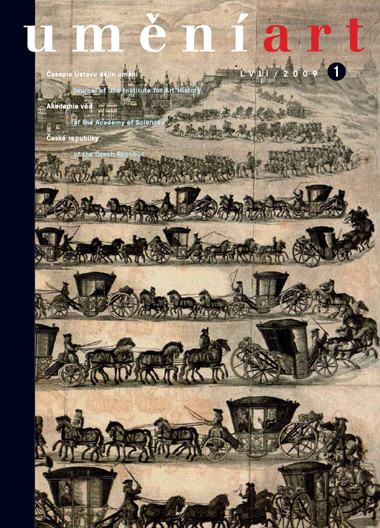Radka Miltová - Pavel Suchánek
Ceremonial Carriages of the Olomouc Bishops and Prague Archbishops of the 18th Century
The study treats the ceremonial Episcopal carriages in Bohemian and Moravian collections (two today at the castle at Náměšť na Hané, one in the collections of the Archdiocese Museum in Olomouc [Olmütz] and two in the exhibition in Ctěnice). Comparison of the carriages with correspondence and inventories from the period has shed new light on the question of their origin. All three Olomouc Episcopal carriages are connected with the acquisitions of Bishop Ferdinand Julius Troyer, who purchased them for his enthronement: the larger Náměšť carriage of the carosse type from one of the members of the Esterházy family; the Náměšť Berlin of Countess Kinsky; and the largest of the carosses (today in Olomouc). The latter was probably one of the fabulous carriages of the French envoy Louis François Armand du Plessis, Duke de Richelieu. The upholstery, craftwork and painting of all three of Troyer's carriages were altered. The paintings, which have been partially preserved, indicate that a single iconographic conception informed the superb artistry of the commission. (It was the work of Viennese artists, including the chancellor of the academy Michelangelo Unterberger.) Research on the ceremonial carosse of the Prague archbishops has also yielded new information, in particular a connection with the Bishop of Litoměřice (Leitmeritz), Moritz Adolf Karl Duke of Sachsen-Zeits. He used the luxurious carriage during his enthronement in December 1733. Detailed study of the bishops' inventories, descriptions of ceremonial entries and the carriages has provided a much more detailed picture of the history of the carriages. It has also helped to uncover the specific representational strategies of the people who commissioned the carriages. Analysis of the enthronement ceremonies in Prague and Olomouc has revealed some small differences against the backdrop of a common, secularised form of the rite. The secular tone of these events is also underlined by the iconography of the paintings, which commemorate the bishops' patronage of their fiefs and extol the virtues of those who commissioned the carriages.
Full-text in the Digital Library of the Czech Academy of Sciences:
https://kramerius.lib.cas.cz/uuid/uuid:b7018c7f-ef50-7e03-5c20-70867a561d66
< back

